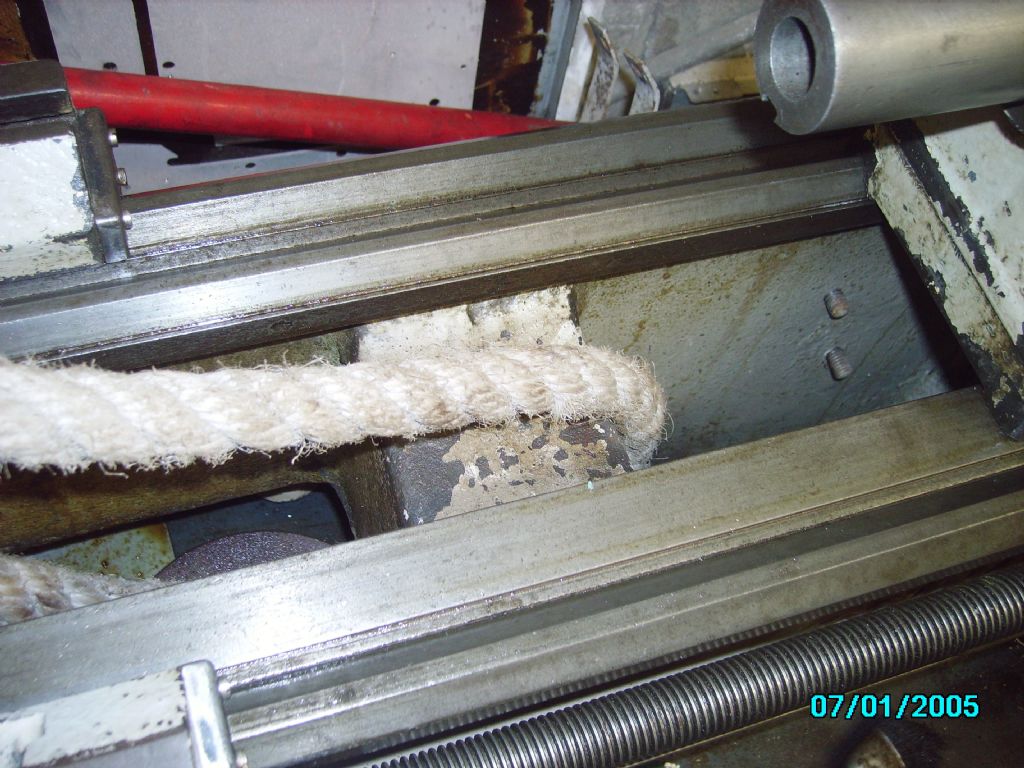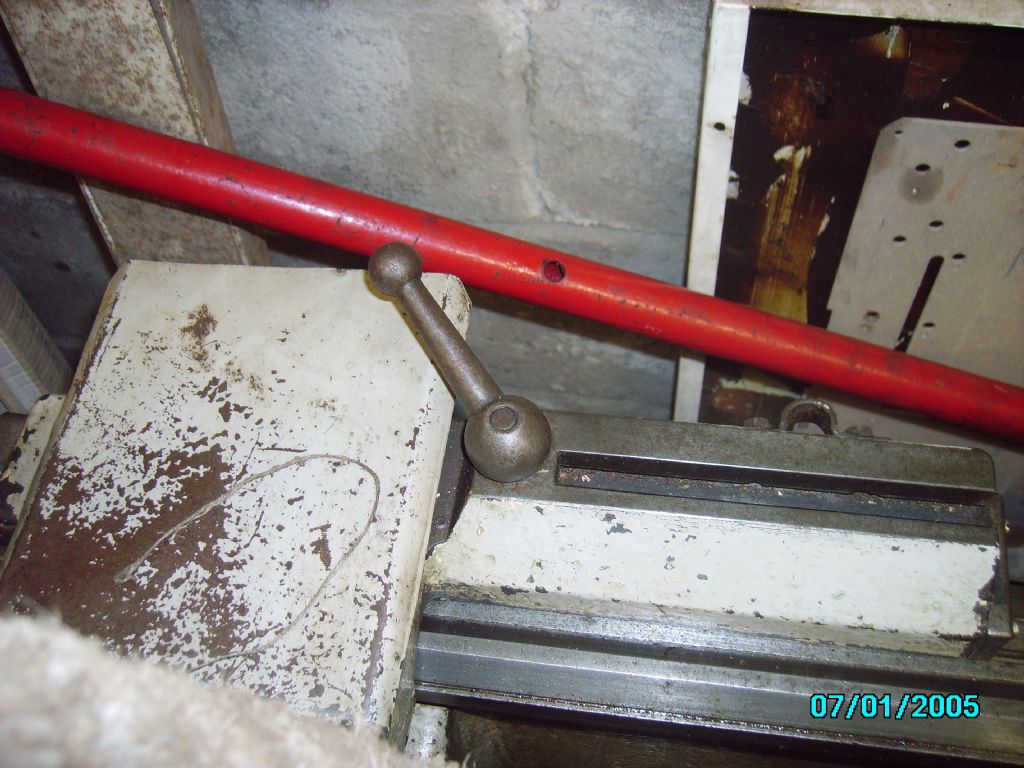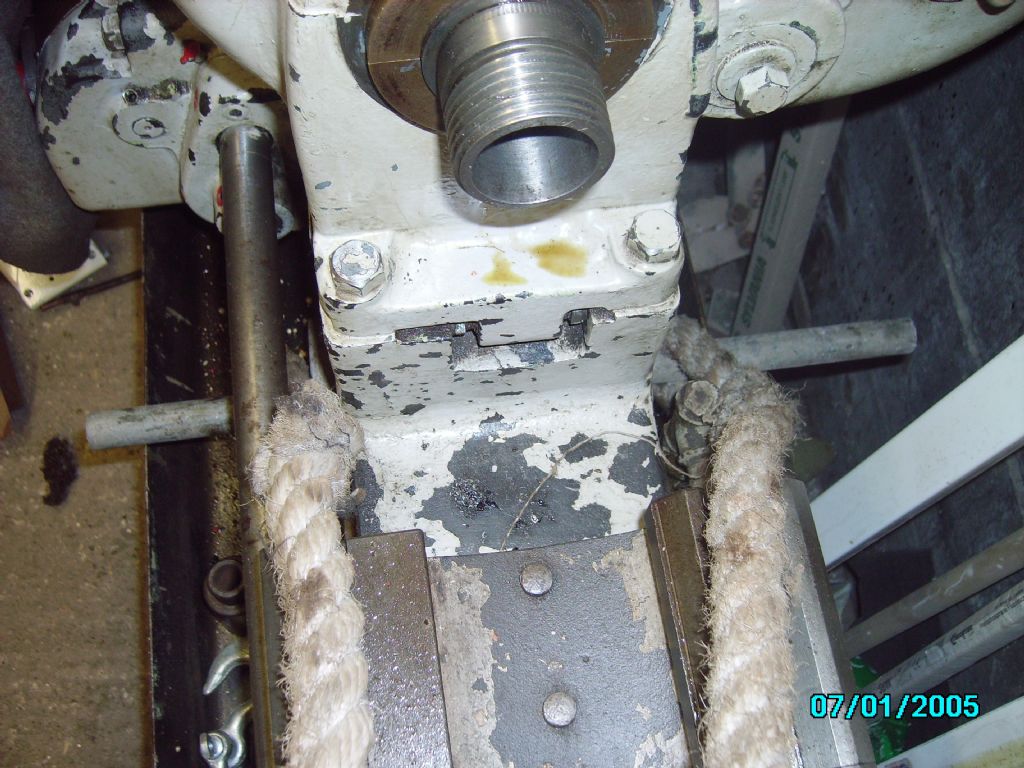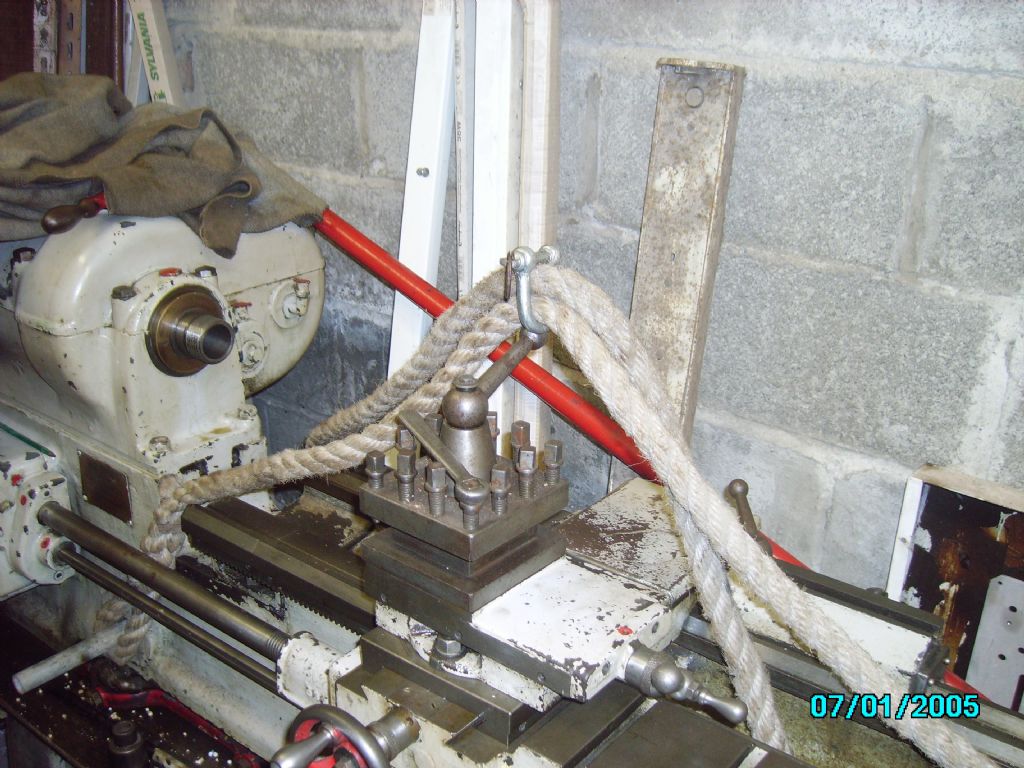Hi Phil,
It will undoubtedly happen on a day in October (2014).
I have one more recce visit, likely this week, to undo the fourth head bolt, de-concrete the legs & plinth, remove motor and motor plate, tidy up, and remove all loose stuff.
I am further waiting on the seller to remove a couple of tons of scrap from the garage, through which the lathe will have to be run to the road.
Tonight, I am just thinking preparation for the lift has to be done in more and deeper detail, to protect lead screw and power feed from lifting chains.
I really wanted to remove the carriage, but have not been able to work it out, even with everybody's advice.
My theory was, with power shaft and lead screw both disengaged, in neutral positions, that the carriage might be simply rolled right off the bed to the right, in toto, but my engineer friend in London said that will not work – why, he did not elaborate. I feel I am still right, that it will, but I have not the help to do it before the big move day, when we will not have the time on the day. The carriage stays on.
Also, Brian's latest advice, on lifting from the eyehole and the most extreme tailstock end, has changed my plan A – I was going for more of a central position, likely on the bed step up. Have to think it through more.
Brian's positioning advice seems likely to have the lifting chains running quite horizontally. But, it might be the best way of balancing it, giving better control.
I have not done this before.
Also, with the carriage on, there is a lot in the way of the chains, and I will have to plan this better.
I may go down, with the crane, before the big day, just to lash it all up ready to lift. I do not want to waste the time of the friend who will be with me on the day.
We have a tight schedule day, on the driving. We are starting out in London, the lathe is in Southampton, and it is going to a house of mine in Somerset, where the lathe may live for a year or so, and then we are returning to London.
Any more thoughts will be gratefully welcomed.
Chris.
Edited By CHRISTOPHER MILLS 1 on 28/09/2014 20:00:46
Doug Goding.







 , it is easy to not appreciate the full magnitude of problems you may have to deal with, you will be there, unfortunately, I will not. I am now seroiusly considering moving my covmac in bits, because I have to get it through a doorway, and I don't know if I have sufficient room to turn it round. with the legs on. What do you think to the above Brian?
, it is easy to not appreciate the full magnitude of problems you may have to deal with, you will be there, unfortunately, I will not. I am now seroiusly considering moving my covmac in bits, because I have to get it through a doorway, and I don't know if I have sufficient room to turn it round. with the legs on. What do you think to the above Brian?

